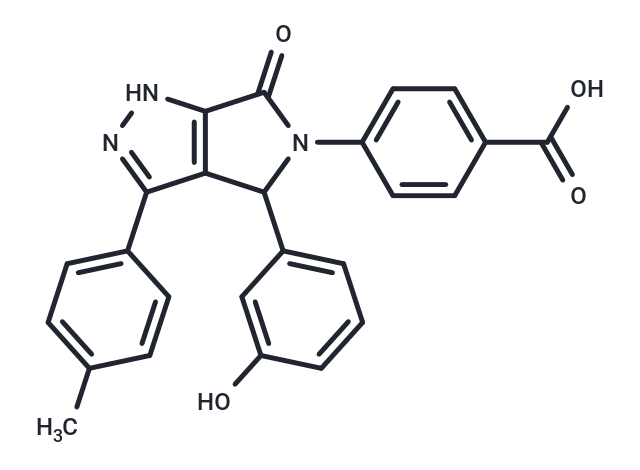Shopping Cart
- Remove All
 Your shopping cart is currently empty
Your shopping cart is currently empty

CID 16020046 (C390-0219) is a selective GPR55 antagonist, inhibiting GPR55 constitutive activity with IC50 of 0.15 μM in yeast.

| Pack Size | Price | Availability | Quantity |
|---|---|---|---|
| 2 mg | $33 | In Stock | |
| 5 mg | $56 | In Stock | |
| 10 mg | $81 | In Stock | |
| 25 mg | $163 | In Stock | |
| 50 mg | $239 | In Stock | |
| 100 mg | $347 | In Stock | |
| 1 mL x 10 mM (in DMSO) | $62 | In Stock |
| Description | CID 16020046 (C390-0219) is a selective GPR55 antagonist, inhibiting GPR55 constitutive activity with IC50 of 0.15 μM in yeast. |
| Targets&IC50 | GPR55:0.15 μM |
| In vitro | In yeast cells expressing human GPR55, CID16020046 inhibited agonist-induced receptor activation. In human embryonic kidney (HEK293) cells stably expressing human GPR55, CID16020046 behaved as an antagonist on LPI-mediated Ca2+ release and extracellular signal-regulated kinases activation, but not in HEK293 cells expressing cannabinoid receptor 1 or 2 (CB1 or CB2). CID16020046 dose-dependently inhibited lysophosphatidylinositol (LPI)-induced activation of nuclear factor of activated T-cells (NFAT), nuclear factor κ of activated B cells (NF-κB) and serum response element, translocation of NFAT and NF-κB, and GPR55 internalization [1]. |
| Alias | C390-0219 |
| Molecular Weight | 425.44 |
| Formula | C25H19N3O4 |
| Cas No. | 834903-43-4 |
| Smiles | Cc1ccc(cc1)-c1n[nH]c2C(=O)N(C(c12)c1cccc(O)c1)c1ccc(cc1)C(O)=O |
| Relative Density. | 1.425 g/cm3 (Predicted) |
| Storage | Powder: -20°C for 3 years | In solvent: -80°C for 1 year | Shipping with blue ice. | |||||||||||||||||||||||||||||||||||
| Solubility Information | DMSO: 55 mg/mL (129.28 mM), Sonication is recommended. | |||||||||||||||||||||||||||||||||||
Solution Preparation Table | ||||||||||||||||||||||||||||||||||||
DMSO
| ||||||||||||||||||||||||||||||||||||

Copyright © 2015-2025 TargetMol Chemicals Inc. All Rights Reserved.